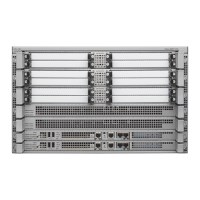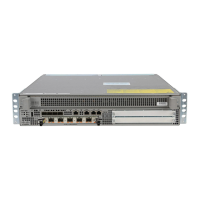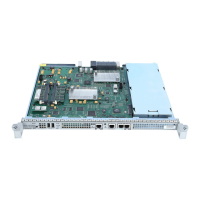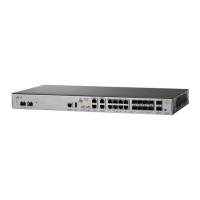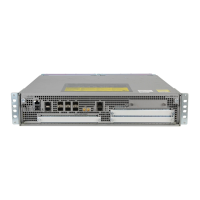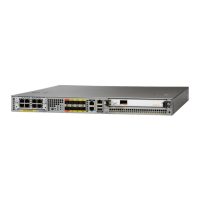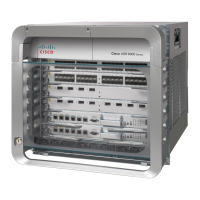Configuring MPLS Layer 2 VPNs
Overview of L2VPN Interworking
2
Cisco ASR 1000 Series Aggregation Services Routers Software Configuration Guide
• Configuring Frame Relay DLCI-to-ATM AAL5SNAP Bridged Interworking, page 6
• Gigabit EtherChannel for Virtual Private Wire Service, page 17
• Configuring Gigabit EtherChannel for Virtual Private Wire Service, page 19
• Additional References, page 30
• Feature Information for Configuring MPLS Layer 2 VPNs, page 31
• Glossary, page 33
Overview of L2VPN Interworking
Interworking is a transforming function that interconnects two heterogeneous attachment circuits (ACs).
Several types of interworking functions exist. The function that is used depends on the AC type used,
the type of data carried, and the level of functionality required. The two main Layer 2 Virtual Private
Network (L2VPN) interworking functions supported in Cisco IOS XE software are bridged interworking
and routed interworking.
Layer 2 (L2) transport over multiprotocol label switching (MPLS) and IP exists for ACs, such as
Ether
net-to-Ethernet or Point-to-Point Protocol (PPP), Ethernet to VLAN, and Ethernet to Frame Relay.
An interworking function facilitates translation between different L2 encapsulations.
L2VPN Interworking Modes
L2VPN interworking works in either Ethernet (bridged) mode or IP (routed) mode. You can specify the
mode by issuing the interworking {ethernet | ip} command in the pseudowire-class configuration
mode.
The i
nterworking command causes the ACs to be terminated locally. The two keywords perform the
following functions:
• The ethernet keyword causes Ethernet frames to be extracted from an AC and sent over the
pseudowire. Ethernet end-to-end transmission is resumed. The AC frames that are not Ethernet are
dropped. In the case of VLAN, the VLAN tag is removed, leaving an untagged Ethernet frame.
• The ip keyword causes IP packets to be extracted from an AC and sent over the pseudowire. The AC
frames that do not contain IPv4 packets are dropped.
The following sections explain the Ethernet and IP interworking modes in detail.
Ethernet or Bridged Interworking
Ethernet interworking is also called bridged interworking. Ethernet frames are bridged across the
pseudowire. The CE routers can natively bridge Ethernet traffic or can route traffic using a bridged
encapsulation model, such as Bridge-group Virtual Interface (BVI) or Routed Bridge Encapsulation
(RBE). The PE routers operate in the Ethernet like-to-like mode.
The Ethernet interworking mode offers the following services:
• LAN services—An example of this is an enterprise that has several sites, with some sites having
Ethernet connectivity to the service provider (SP) network and others having Asynchronous
Transfer Mode (ATM) connectivity. If the enterprise requires LAN connectivity to all its sites, traffic
from the Ethernet or VLAN of one site can be sent through the IP/MPLS network and encapsulated
as bridged traffic over an ATM VC of another site.

